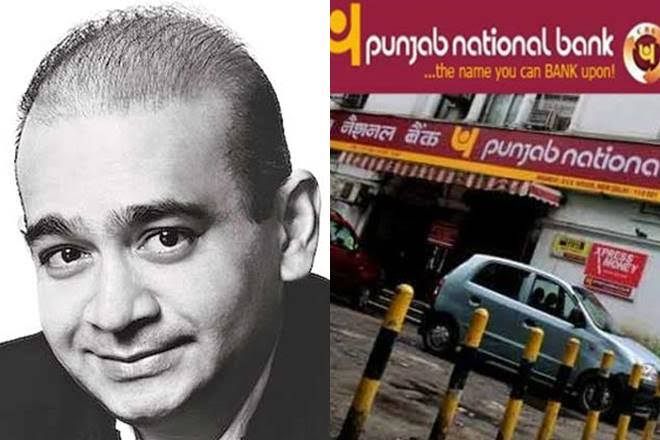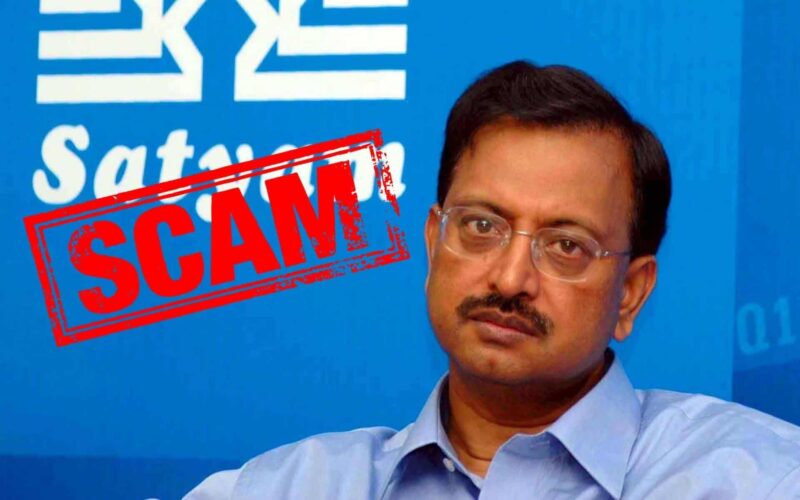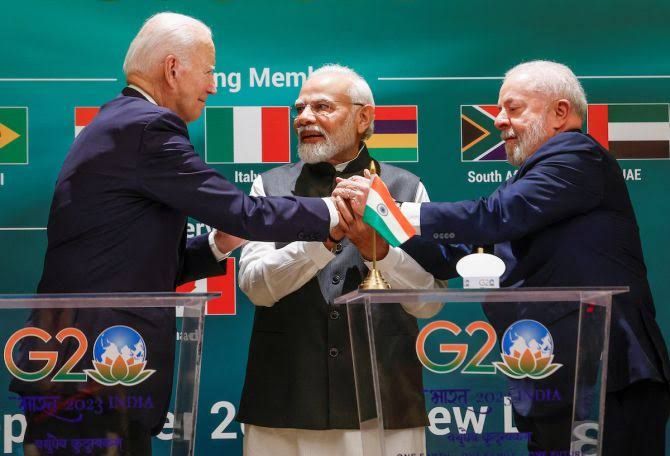Author: Ritika Dembla, a student at G.H. Raisoni Law University, Amravati
ABSTRACT
This article explores the Punjab National Bank (PNB) fraud case, popularly known as the Nirav Modi scam, highlighting its significance as one of India’s largest banking frauds. Through an analysis of the fraudulent scheme, the study sheds light on operational weaknesses within the banking sector and regulatory lapses that enabled the fraud to occur. By examining past scandals and the broader impact of financial misconduct, the paper emphasizes the urgent need for robust risk management practices and regulatory reforms to safeguard the integrity of the banking sector. Through a chronological overview of investigative efforts and legal proceedings, the research underscores systemic failures and governance deficiencies that perpetuated the fraud. In conclusion, the paper advocates for proactive measures to address vulnerabilities exposed by the PNB scam, emphasizing the importance of enhancing risk management, strengthening regulatory oversight, and fostering a culture of accountability within the banking industry.
INTRODUCTION
Punjab National Bank (PNB), a well-known public sector bank in India and a nationalized institution with global reach, received a lot of attention following the notorious Bandy House PNB Mumbai Branch scandal, also known as the Nirav Modi scam. This incident represents one of the largest banking frauds in Indian history and serves as a case study in research misconduct. On February 14th, 2018, PNB announced a huge loss of around 1.8 billion dollars, triggering significant scrutiny and focus on the main culprit, Nirav Modi, a prominent figure in the diamond industry. This academic article explores the details of the fraudulent scheme, its wide-ranging effects, and the tactics Nirav Modi and his allies used to plan this massive breach of banking integrity.
BRIEF OVERVIEW OF BANKING AND FINANCIAL SERVICES INDUSTRY (BFSI) SCANDALS IN INDIA
Cases involving renowned Indian businessmen such as Mr. Harshad Mehta, Mr. Ketan Parekh, Mr. Vijay Mallya, Mr. Mehul Chokshi, and Mr. Nirav Modi highlight the prevalence of severe financial irregularities in the banking sector. These individuals have been implicated in a number of high-profile frauds, involving the embezzlement of billions of rupees. These fraudulent activities employ a variety of methodologies, including the manipulation of financial instruments such as Ready Forward Deals and discounting pay-orders, as well as Ponzi schemes, money laundering, round-tripping under FEMA violations, and Letter of Understanding (LoU) and Letter of Credit (LoC) scams, among others. Researchers like Pradhan and Bai (2018) and Upadhyay (2019) have explained in scholarly discourse how the complex relationship between the world’s financial institutions and the growth of cross-border transactions has made banks more vulnerable to criminal activity. Additionally, the evolving regulatory landscape has contributed to a dynamic legislative framework aimed at addressing such malfeasance. The cumulative impact of these fraudulent actions on the Indian economy emphasizes the importance of thoroughly understanding banking frauds and financial scams. Furthermore, the gradual and persistent character of these scams raises serious questions about the effectiveness of banking system supervision procedures, with a focus on the role of whistleblowers in detecting, reporting, and mitigating misconduct.
PNB SCAM CASE STUDY
On February 14th, 2018, Punjab National Bank (PNB) was entangled in a major controversy of approximately 11,000 crore rupees involving the issuance of fraudulent bank guarantees to billionaire Mr. Nirav Modi. Mr. Modi worked in the diamond industry with his uncle, Mehul Choksi, and sought buyer’s credit from PNB to assist diamond imports. According to Reserve Bank of India (RBI) standards, buyer’s credit usually requires collateral securities. However, two PNB employees manipulated data to issue Letters of Undertaking (LOUs) without securing collateral, facilitating loans over six years from 2011 to 2017. These transactions involved Indian overseas banks, including Allahabad Bank and Axis Bank.
PNB’s SWIFT system, which facilitates transactions between Indian and foreign banks, was not directly integrated with the Core Banking System (CBS). As a result, manual processing took place at the Mumbai branch’s Brady House, allowing workers to issue fraudulent LOUs to foreign banks. This malpractice continued until January 2018, when PNB authorities detected anomalies in a loan application submitted by Nirav Modi’s enterprises, sparking a thorough inquiry. The case was then referred to the Central Bureau of Investigation (CBI), which resulted in legal proceedings against Nirav Modi, his family members, and their associated companies.
The case, which involved an intentional act of omission or commission in banking transactions, highlights the banking sector’s vulnerability to fraudulent activity. The lack of sufficient oversight and compliance with regulatory standards aided this misconduct, resulting in a significant financial loss for PNB. This case study underscores the need of a strong banking sector in ensuring the stability and integrity of the economy.
Nirav Modi initially approached PNB for finance for diamond imports, but was turned down due to the exorbitant interest rates. Instead, he obtained loans from foreign banks, leveraging PNB-issued LOUs without necessary procedures and record-keeping. PNB’s issuing of these LOUs over SWIFT channels circumvented its own processes, allowing for fraudulent transactions. The overseas banks relied on PNB’s guarantees, assuming PNB’s liabilities in the event of default, indicating a failure in risk assessment and oversight.
The timeline of events depicts the gradual reveal and escalation of the fraud, beginning with PNB making a formal complaint in January 2018, followed by following actions by investigative agencies and public disclosures from the bank. The situation raises serious concerns about PNB’s inadequate lending policies, management of banking operations, and the regulatory structure that governs such transactions.
INVESTIGATION
As of the latest developments up to March 2022, the Punjab National Bank (PNB) fraud involving Nirav Modi and his associates has undergone significant legal proceedings and investigative efforts. Initially, PNB detected irregularities when three associated firms – Diamond R US, M/s Solar Exports, and M/s Stellar Diamonds – approached the bank in January 2018 seeking Letters of Undertaking (LoUs) without the requisite cash margin. Upon further investigation, PNB uncovered fraudulent LoUs issued by two bank officials, Gokulnath Shetty and another unnamed individual, on behalf of the aforementioned firms associated with Nirav Modi and the Gitanjali Group. Subsequently, PNB filed a complaint with the Central Bureau of Investigation (CBI) on January 29, 2018, alleging collusion between Nirav Modi, his family members, and bank officials to perpetrate cheating against PNB, resulting in significant financial losses.
As of May 18, 2018, the scale of the scam had escalated to approximately ₹14,356.84 crore (US$2.1 billion), with Nirav Modi reportedly evading authorities and residing in London under alleged false pretenses. Efforts by the CBI to secure a red corner notice (RCN) against Nirav Modi, his brother Nishal, and other individuals associated with the scam have been ongoing, with international cooperation sought through organizations such as Interpol.
In subsequent legal proceedings, former MD and CEO of Allahabad Bank, Usha Ananthasubramanian, faced dismissal from her position and bail granted on a surety bond in August 2018. Additionally, investigations revealed a disproportionate accumulation of wealth by Gokulnath Shetty, prompting the registration of a case against him for amassing assets beyond his known sources of income.
Nirav Modi’s arrest in London in March 2019 marked a significant development in the case, with subsequent legal proceedings in the UK courts denying him bail multiple times due to flight risk concerns and evidence tampering threats. Furthermore, efforts by Indian authorities have led to the freezing of Swiss and Singaporean bank accounts associated with Nirav Modi and his family members, aiming to recover funds linked to the scam.
In August 2019, the CBI moved to declare Nirav Modi, his brother Neeshal Modi, and an associate proclaimed offender, seeking to attach their properties. Legal proceedings against Nirav Modi in the UK, including extradition hearings and asset seizures, have continued, with adjournments and asylum applications adding to the complexity of the case.
In parallel, the Enforcement Directorate (ED) has filed chargesheets and pursued legal action against Mehul Choksi, another key figure in the scam, alleging organized fraudulent activities across multiple jurisdictions. Additionally, efforts to confiscate assets worth nearly Rs 1,400 crore linked to Nirav Modi have been ordered by the Prevention of Money Laundering Act (PMLA) Court.
Overall, the PNB scam involving Nirav Modi and associated individuals has entailed extensive legal and investigative proceedings, with ongoing efforts to recover funds, prosecute perpetrators, and prevent further financial malpractice.
IMPACT ON BANKS
The impact of the Punjab National Bank (PNB) fraud scandal was felt by a number of banking institutions, including Union Bank of India, Allahabad Bank, Axis Bank, and State Bank of India. Union Bank of India’s stock value fell by -5.8% between February 12th and February 15th, 2018, resulting in a market capitalization loss of Rs 633 crores. Similarly, Allahabad Bank’s stock price fell by more than -9.9% during the same period, resulting in a market value fall of more than Rs 484 crore. Axis Bank’s share price fell -3.4% by February 15th, 2018, resulting in a market value reduction of more than Rs 4,800 crores. SBI, India’s largest public-sector bank, saw its share price fall by -3.34% between February 12th and February 15th, 2018, resulting in a market capitalization drop of Rs 8,329 crores. These adverse market movements reflect the broader impact of the PNB fraud scandal on the financial sector, with investor confidence shaken and significant value erosion witnessed across multiple banking entities.
IMPACT ON PNB RATING
Moody’s and Fitch, two renowned global rating agencies, have highlighted concerns about Punjab National Bank’s (PNB) creditworthiness. They have begun a rating watch on the bank, signifying a thorough examination prior to a possible downgrade or modification in outlook. Moody’s Investors Service has placed PNB’s local and foreign currency deposit ratings of Baa3/P-3, as well as its foreign currency issuer rating of Baa3, under scrutiny for possible downgrading. The primary reason for this examination is the anticipated financial consequences of the fraudulent acts. The key issue driving the rating action is the perceived possibility of a decline in the bank’s independent credit profile as a result of the identification of several fraudulent transactions.
CRISIL, an Indian rating agency, has assigned PNB a AAA grade, indicating the greatest level of safety for the instruments issued or the institution itself. On January 25, CRISIL changed PNB’s and other public sector banks’ outlook from negative to stable, citing government recapitalization support. Following suit, CARE granted PNB an AA+ rating, judging the current fraud incidence a significant event requiring rating changes in compliance with SEBI standards for rating agencies.
CONCLUSION
The Punjab National Bank (PNB) fraud has underscored significant credit risk exposure among several banks, prompting a critical examination of the underlying processes that allowed such misconduct to persist unchecked over an extended period. A notable operational deficiency was observed in the process of verifying transactions before disbursing non-funded loans, leading to a lapse in operational risk management and subsequent credit-related losses. As elucidated in the 5w2h analysis, adherence to standardized operating procedures with robust control mechanisms is imperative to mitigate such risks effectively.
Furthermore, a compliance failure was evident in the unmonitored utilization of the SWIFT financial messaging system, enabling collateral-free transactions with the bank’s accomplices and Nirav Modi without detection by other officials or during external audits spanning seven years. Enhancements in the bank’s risk management framework are warranted, given the recurrent susceptibility to fraudulent activities, indicative of inherent fragility and inadequate planning in internal risk management practices. Proactive engagement with relevant paying and intermediary banks could have averted monetary losses, highlighting the need for heightened vigilance among stakeholders who have yet to internalize the lessons gleaned from such incidents.
The regulatory oversight of banks is also subject to scrutiny, with questions raised regarding the efficacy of existing risk management protocols established by the Reserve Bank of India (RBI). While the RBI has introduced various risk mitigation measures, there is a call for empowering banks to swiftly address fraudulent activities, thereby circumventing bureaucratic impediments.
Beyond the substantial financial implications, the integrity of the banking sector’s reputation is imperiled, particularly amid global efforts to bolster banking reforms and enhance financial sector efficiency. The infusion of capital through recapitalization bonds aimed at revitalizing public sector banks burdened by non-performing assets (NPAs) and low capital adequacy ratios may necessitate a reassessment in light of these fraudulent activities.





